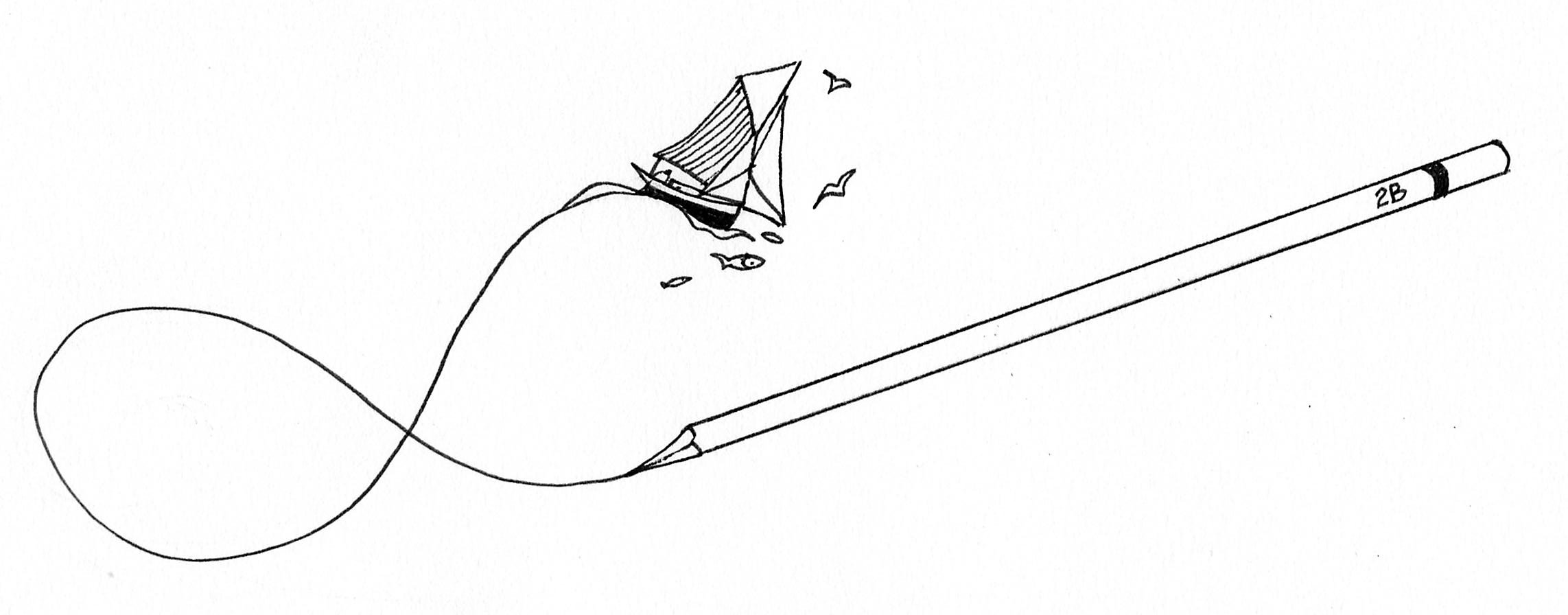How to catch creative ideas
It’s been an intensive time for teaching this last few months – watercolour courses, drawing workshops, demonstrations, small group sessions, in the studio or to art clubs – and the more I teach, the more I learn.
Art techniques, like other creative skills, can weave you a net to catch ideas and inspirations. The better quality the net, the more fluent and versatile your skills, the more likely you are to catch something special, that elusive quality that shines a new light on the familiar and gets right to the heart of the subject. So, in my more experienced groups I’ve been trying to teach more than techniques, more than nice even washes and neat tonal studies; we’ve been painting poems, choosing themes to sketch, trying to weave sketching and observation into the fabric of our lives. Doodle, dream, set your mind free.
It’s not easy to pass on in a six week course understandings about creativity and perception that have crept up on me slowly, gradually, as I drew, failed and kept on drawing, but I’m trying to break it down into tangible ways of thinking. ‘I see!’ we say, when we understand. But what do we see? And how do we see it?

My students humour me and try their best whilst wondering what the hell I’m on about. So I decided to summarise my lessons on creativity into ten tips. Well, ten and a half……
1. Embrace failure – it will be a constant companion. It means you are taking risks and pushing into the unknown. This, as any creative will tell you, is a Good Thing.
2. Make a mess – catch fragments of ideas, doodles, splashes of colour. If you need to throw paint on the page, do it. Women have a problem with this – we are wired to be tidy and keep a family in order.
3. Practise, practise practise. Learn the skills, the nuts and bolts of your craft, whether it’s art, words, music or anything else. Not just briefly, but over and over again; it takes time for information to get from your head to your hands and, more importantly, into your muscle memory. Let yourself play around with new techniques so that they filter down from brain to hand.
4. Enjoy the process, forget results. Don’t aim to make a pretty picture every time, just draw and paint because you want to learn how to see better, to appreciate your world. If you come at it this way round you are very likely to end up with paintings that have something special.
5. Be your own best critic – Critique not criticism – if you can analyse what’s gone wrong you are half way to putting it right. Ignore the monkey on your shoulder which says ‘there! I knew you couldn’t do it!’
6. Draw like you mean it. Technique is only half the story – the net that catches the fish. Draw with enthusiasm, because you’re excited by the shapes you are seeing, and you may capture something that a technically perfect but uninspired piece may not.
8. Be open to new ideas, even when there aren’t any around, or you don’t feel like it. Expect to find extraordinary things in surprising places. Listen to your half dreams.
9. Be a magpie. Surround yourself with interesting shapes and colours – and keep changing them….. shells, pebbles, autumn leaves, feathers, patterns, scraps of colour from a magazine, an open book, postcards, anything that catches your eye as you move around the house and might act as a creative prompt.
10. Keep sketching, anywhere, anyhow, any time. Fill each page with words and pictures, doodles, collage, bus tickets, anything that reflects your journey. Like a diary, there is no such thing as failure; your sketchbook (or your notebook) is the busy back room of your mind where the real work goes on!
10 ½ Now give yourself a treat and watch the following TED talk: http://www.ted.com/talks/elizabeth_gilbert_on_genius. It will make you think about creativity in a new way.
Happy fishing!



